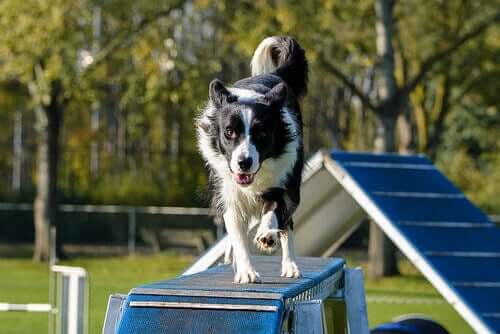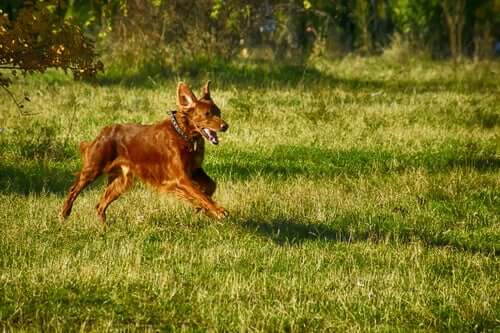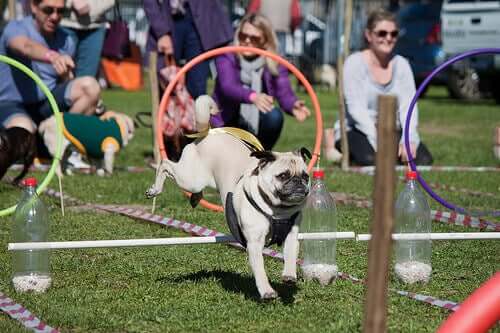8 Unwritten Rules for Dog Parks

Some dog parks have signs displaying the rules for the park. However, there are lots of other rules for dog parks that don’t always appear. So, we’ve decided to share 8 unwritten rules for dog parks.
In many countries, current legislation forces dog owners to keep their dogs on a leash. This means that dog parks are pretty much the only place that dogs can freely enjoy themselves and interact with other dogs. As a result, dog parks have become very important places for our pets to socialize in.
What’s a dog park?
Dog parks are normally enclosed areas where dogs can be let off a leash legally. With the exception of some cities, it’s normally mandatory for dogs to be kept on a leash in public places.

There are several different types of dog parks, but most are flat with sandy or stone ground and a few trees. Some have some apparatus for exercise. The best dog parks have different types of soil and different areas for different sizes or ages, as well as water, trees, and sand.
More and more parks like this are popping up, although some can be quite similar and boring. As a result, most people take their dogs to the nearest one, regardless of what it’s like.
Written rules for dog parks
Normally, you’ll find a poster in the park with a list of rules. These are usually:
- No entering the park with food
- You must collect your dog’s feces
- Your dog must have a collar to enter
- Bitches in heat are not permitted
- Potentially Dangerous Breeds must wear muzzles
Unwritten rules for dog parks: food and toys
We’ve seen the written rules, so what about the unwritten ones? Here goes…
1. No entering the park with food, whether for dogs or people. There may be other dogs in the park that could be hungry or get stressed if they smell food in the park. This could even lead to a confrontation. At the very least, you would be rewarding one dog with food and ignoring the others.
2. No entering the park with toys, balls, and especially not toys with whistles. Toys can cause a great deal of excitement, and this can make a dog anxious if they see toys flying or rolling around. There are also many dogs that don’t know how to share toys and this too can lead to a confrontation.
Unwritten rules: hours and etiquette
3. Be mindful of the neighbors. Some parks with tell you their opening times and others won’t. Many parks will be close to buildings or houses, and the noise of barking dogs could bother people who are trying to rest or sleep. Don’t use them between 10 pm and 8 am.
4. Pay attention to your dog. Although they won’t easily escape from the enclosure, you still need to keep an eye on your dog. There may well be some of your friends there, but you mustn’t let that draw your attention away from your dog.
5. If your dog is annoying another dog, leave the park and don’t wait for the other party to get angry. If your dog is being too insistent with another, it’s time to leave for today. You wouldn’t like someone else’s dog to harass yours, so be sympathetic and understanding towards others.
6. Don’t enter with sick or unvaccinated dogs. The safety and health of all animals in your neighborhood is partly your responsibility. If your dog isn’t in good health, don’t go to the park. If your dog is suffering from back or leg pain, don’t make them exercise or run. Let them rest.

Unwritten rules for dog parks: safety and potentially dangerous dogs
7. Don’t let your dog dig holes or spoil the park. It’s common for particular breeds or stressed dogs to dig holes, and often the ground is perfect for it. But try to stop your dog from destroying the ground as it could make it unsafe for other people. They could trip and hurt themselves.
8. Potentially dangerous breeds must enter with a muzzle and not stay in the park for too long. These breeds must be muzzled at all times in public places. Since these dogs tend to be quite abrupt and spontaneous, try not to stay in the park for longer than five minutes.
9. Don’t enter the park with spiked, hanging, or electric collars. They’re very bad for your dog, but they can also hurt others in the park.
Dog parks are great fun, but we need to treat them and other users with respect. That way everyone stays safe and has a great time. Just follow the rules and use some common sense.